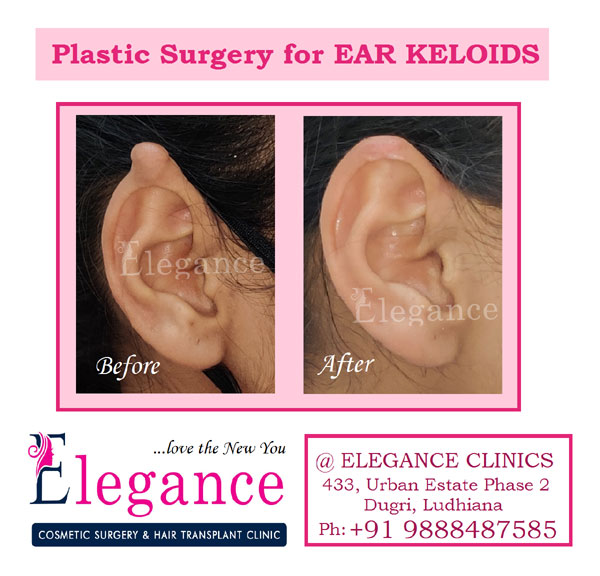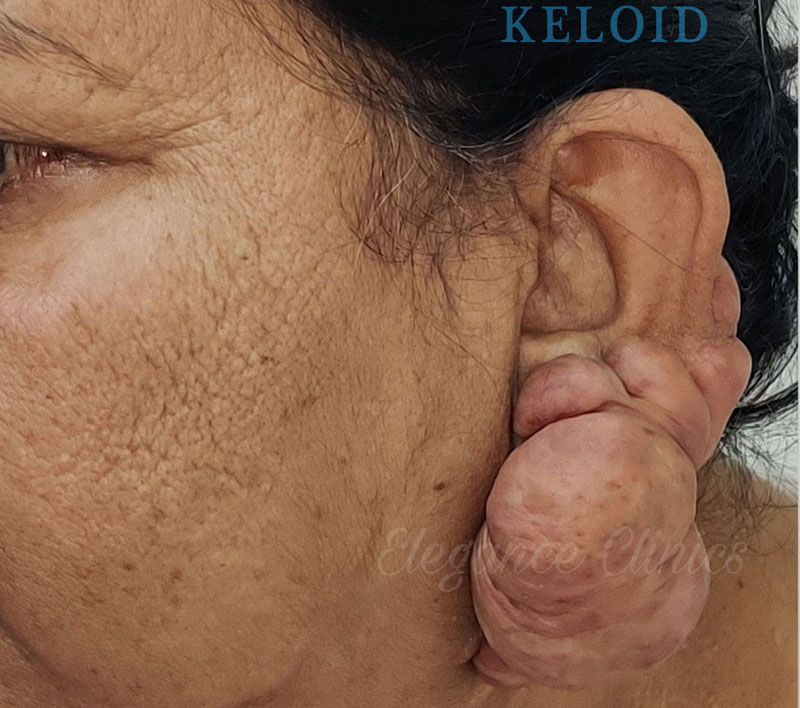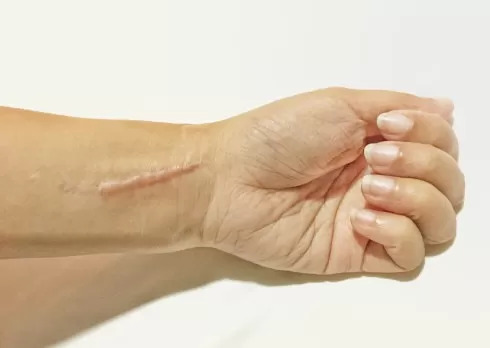Hypertrophic Scars
A small wound to the top layer of your skin usually heals nicely. New skin forms as the wound heals. With deeper wounds (into the dermis layer and lower), our body responds by making collagen to repair the wound. Collagen is thicker than the rest of your skin. This thicker, less flexible tissue becomes a scar. Most scars are flat. However, sometimes the Stop Signals of Healing are absent for some reasons and our body makes extra collagen and lesser elastin that results in a Raised Stiff Scar. This type of raised scar can be either a Hypertrophic scar or a Keloid.

The key difference between hypertrophic and keloid scars is the degree of the spread of the scar around the original wound. The hypertrophic scar is an Elevated Scar that stays within the original wound area. While the Keloid Scars extend beyond the original wound area. Such abnormal wound healing is usually seen in areas of Taut skin. But they, especially Keloid Scars can form in areas of loose skin too. Hypertrophic scars start forming soon after the wound has healed while a Keloid can form even years after the initial injury. Hypertrophic scars are easier to treat than Keloids and may even go on their own but a keloid scar never goes by itself. Both can have itching and pain, unpleasing sight and may limit movements of a joint on which they are present.
Hypertrophic scar or a keloid can form from skin injury or wounds resulting from accidental trauma, inflammation, burns and surgical incisions.


Factors that increase the risk of hypertrophic scarring include:
- Burn wounds, especially second- and third-degree burns.
- Any wound that takes more than 3 weeks to heal is more likely to form a Hypertrophic Scar
- Poor wound healing due to infection.
- Genetic, especially Keloids, run in certain families.
- Taut skin in certain areas of body
No, they’re not dangerous or life-threatening. They’re mainly a Cosmetic (physical appearance) issue. However, hypertrophic scars can cause pain or itching. Also, if they form over a joint, they can limit your movement so you may want to have them treated.
The goals of Hypertrophic scar and Keloid treatment are to flatten, soften, reduce the size, lighten the color and ease any existing pain and itch of your scar. Following are the various ways with which a Hypertrophic or Keloid scar is managed.
- Massage of the area with Pressure
- Pressure or Compression Garments
- Silicone gel or Self adhesive Silicone Sheet application
- Intralesional Injections of Corticosteroids
- Fractional Laser
- Bleomycin / 5- FU Injection
- Cryotherapy
- Surgery
Surgery is considered when other treatment options have failed. This is because the surgery itself can result in Hyoertrophic scarring and Keloid formation. Surgery may be combined with other treatment to improve the results. The Goals of surgery is to Release the Tension in the area and Provide Coverage that may require a skin grafting or a flap procedure.

